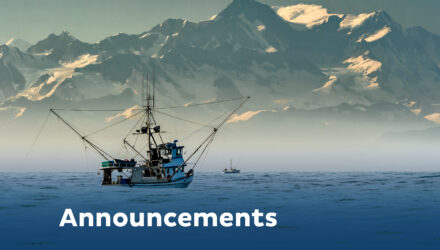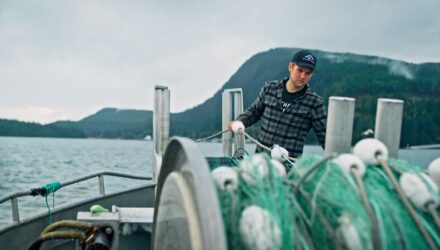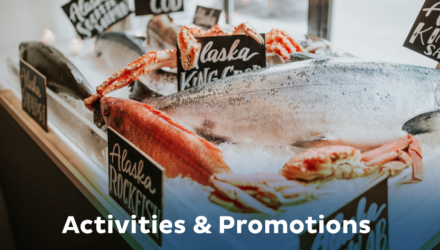The Alaska Seafood Marketing Institute Supports the Industry that Feeds the World

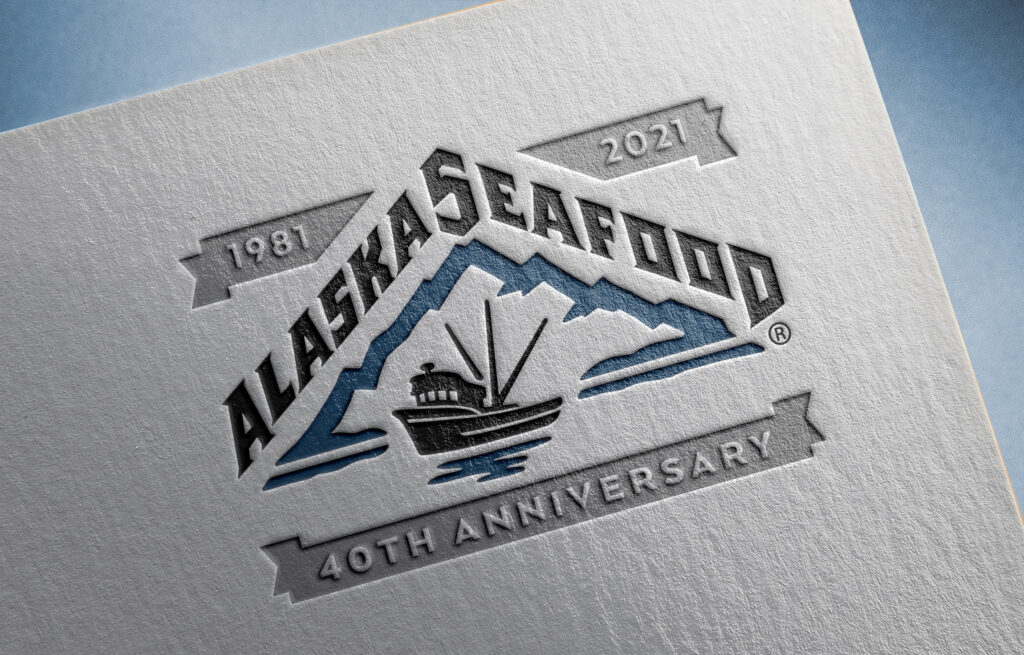
In honor of ASMI’s 40 years of service to the industry, Jes Hathaway dedicates an article to ASMI’s history and scope.
- Alaska: Setting The Gold Standard
- The People Behind The Fish
- It’s In The Can
- Great Depths for the Right Data
- Beyond Alaska
Forty years ago, the Alaska Legislature enacted a seafood levy to be approved and paid by the state’s salmon fishermen. Thus began a public-private partnership that would earn Alaska a leadership role in the wild seafood sector that has yet to be paralleled, much less bested.
The Alaska Seafood Marketing Institute needs no introduction. It is the gold standard for seafood marketing. Not only is ASMI a pioneer in this space, but every other region or brand that takes the leap into the seafood landscape looks first to ASMI as a model. Its success and reach sets the standard industrywide.
In the last four decades, ASMI has evolved from a small agency primarily tasked with moving canned and frozen salmon into diverse markets, to an organization that finds new market opportunities across the globe. The still relatively small organization promotes the full breadth of Alaska Seafood product forms from every fishery. Today, ASMI promotes everything from the stalwart, shelf-stable can of salmon that can be found in home pantries around the world to the celebrated Kazunoko herring roe, gifted in celebration of the New Year in Japan.
As the seafood processing sector evolved over the decades to expand its inventory and fulfill a wide variety of cultural demands, ASMI adapted its outreach to those markets, using every available medium to create new consumers for the Alaska Seafood brand.
In 1981, when the agency was founded, there was no home internet access, few people even had home computers. The iPhone wouldn’t be invented for another quarter of a century. Facebook and every social media platform that followed would arrive in the next century.
Technological leaps in communications would change the way ASMI reaches consumers. But they would not change the institute’s mission or values to increase the positive awareness of the Alaska Seafood brand, in part by championing the sustainability of the state’s seafood harvests.
Alaska: Setting The Gold Standard
Just 23 years before ASMI was founded, Alaska had officially achieved statehood. Its constitution codified what would become a founding and defining principle for ASMI —
“Fish… shall be utilized, developed, and maintained on the sustained yield principle.”
This leadership not only has defined the top end of wild seafood marketing for the last four decades, but it has also set and even improved the standards for fishery management, seafood handling and product innovation.
Because U.S. caught seafood stands among the most sustainable and varied industries in the world, that status puts ASMI square at the top as a global leader in wild seafood marketing.
The focus on sustainability propelled the agency to this position. ASMI called out the statewide sustainability mandate long before it was a consumer buzzword, and it consistently educates ASMI’s customers and clients on the value of sustainable wild-capture fisheries.
“ASMI was an early champion of Alaska’s legendary responsible and science-based fisheries management systems, recognizing and deploying this message and trend long before sustainability was a common market term,” said Alaska Lt. Gov. Kevin Meyer. “This has positioned Alaska as a world leader in sustainable seafood.”
ASMI invested in sustainability as the hallmark for Alaska Seafood long before consumers called for it by name. In fact, it’s likely that ASMI’s marketing of sustainability became a driver of demand over time. And now, according to the latest research compiled for ASMI, consumers are looking for sustainable sources of protein — and seafood tops their choices.
In fact, ASMI fosters the concept of sustainability in Alaska Seafood so effectively that the approval of Alaska salmon under the ecolabel as the third-party seafood certifier helped give the Marine Stewardship Council the credence it needed to establish itself as the signature ecolabel for domestic fisheries.
Today, the Responsible Fisheries Management program — brought to the Alaska fishing industry through an ASMI partnership and launched in 2011 — is paving a new path with an Food and Agriculture Organization of the United Nations-based certification system that works for the industry not because of the industry. Now access to Responsible Fisheries Management certification is available to any domestic fishery, and it’s the first certification scheme to achieve Global Sustainable Seafood Initiative recognition.
The People Behind The Fish
In the simplest terms, what makes Alaska Seafood special is the people and the fish — from the harvesters who bring the fish to the docks, to the processors and cold-chain distributors who deliver it to the market, to the chefs and home cooks who prepare the seafood, and finally the people who enjoy it at home, in a restaurant or even at school. Without these relationships between the people and the seafood, there is no harvest, no product and nothing to nourish our communities.
“ASMI is so much more than just a marketing arm of the seafood industry," said Executive Director Jeremy Woodrow. “We take great honor in representing the hard work, resilience, pride and cultures of Alaska's diverse seafood industry.”
What makes ASMI successful — enough to mark this 40th anniversary — is its ability to zero in on the relationships between the people, the harvest, the sustenance and ultimately the sustainability of this cycle to keep providing for consumers around the world.
“ASMI fills so many roles,” said Lilani Estacio Dunn, former ASMI staff, current Domestic Marketing Committee chair, and marketing director for the Bristol Bay Regional Seafood Development Association. “Two messages ASMI excels at conveying are: Premium — Alaska Seafood is the best of seafood from water to plate and from any angle you approach it. Family — considering the strength of our brand, the close connection of all the players that make it happen makes it all very familial.”
Though it started simply as an endeavor to market salmon to consumers, now ASMI helps tell the story of Alaska’s 30,000-plus commercial fishermen, the processing sector, a diverse portfolio of seafood species and products, and the remote coastal villages that serve as gateways for the majority of our national supply of wild seafood.
“Authenticity has always been at the heart of ASMI’s efforts. Consumers connect to Alaska and Alaska’s fishing industry through the messaging and visuals we create,” Woodrow added. “As a born and raised Alaskan who grew up in a commercial fishing family, it is incredibly meaningful to have the opportunity to share such an important part of Alaska with people worldwide.”
The collaboration between the seafood sector and staff is what brings ASMI’s commitment full circle.
Longtime ASMI Executive Director Ray Riutta (2002-2012) credits the agency’s transformation into a more nimble and effective organization to the overhaul of the board of directors at the turn of the century. This change also coincided with a shift away from a salmon tax paid by fishermen to industry-funding in the early 2000s.
Processors paying the assessment based on the ex-vessel value for all species changed the industry’s investment in ASMI — both literal and figurative — overnight.
“All of a sudden, we had CEOs of the biggest companies sitting on the board. And we had the fishermen represented,” Riutta said. “It came together really well, and I think it gelled into a very good decision-making board. It also allowed us to go out and compete as a unified voice.”
Simplifying the board structure gave ASMI more flexibility and more comprehensive access to the industry across the state.
“It moved the organization beyond being a salmon marketing organization to being an industry-wide organization,” said Riutta. “It was able to guide the industry. But also, with high-ranking executives serving on the board, they were able to make decisions on the spot.”
ASMI’s success still thrives on this dynamic partnership.
“The way the board interacts with the staff and the staff responds to what industry is looking for and needs in the moment is remarkable,” said Jeff Regnart, a longtime ASMI responsible fisheries management and sustainability contractor. “I was taken aback by how dynamic that was and how quickly ASMI can respond to a need that the industry feels is there. They can ramp up in weeks.”
The team showed its chops once again during the market collapse caused by the coronavirus pandemic — focusing on the increase in home cooking as well as direct marketing needs, both of which were the result of a rapidly changing market. ASMI jumped into action, offering guidance for restaurants to successfully offer seafood takeout menu items.
For an expanding cadre of direct marketers, the ASMI staff reinvigorated support for the needs of newcomers and veterans alike, ensuring they would have what they needed to sell their product and promote the Alaska Seafood brand for a growing segment of buyers who were newly and acutely aware of the health benefits of wild seafood as well as the importance of supporting our domestic food system.
“Consumers more than ever are more connected to their food and are seeking nutritious, environmentally friendly foods that align with their ethos,” said Woodrow. “Alaska Seafood has and will continue to have an incredible story to share.”
It’s In The Can
We can’t talk about the evolution and origin of Alaska Seafood without mentioning canned salmon. From that humble yet honorable origin, the journey from canned to Cook It Frozen was a century in the making.
Between 1891 and 1936, canned salmon production in Alaska exploded from just over 750,000 cases a year to more than 8 million.
Though the industry would see a decline in salmon returns over the next several decades, the famed red-fleshed Alaska fish began to rebound in the early 1980s.
With booming stocks but still limited capacity to produce other product forms, canned and frozen salmon were still the leading fishery products coming out of Alaska.
Processors were looking for ways to explore the product’s marketability beyond traditional applications and markets. Enter: ASMI.
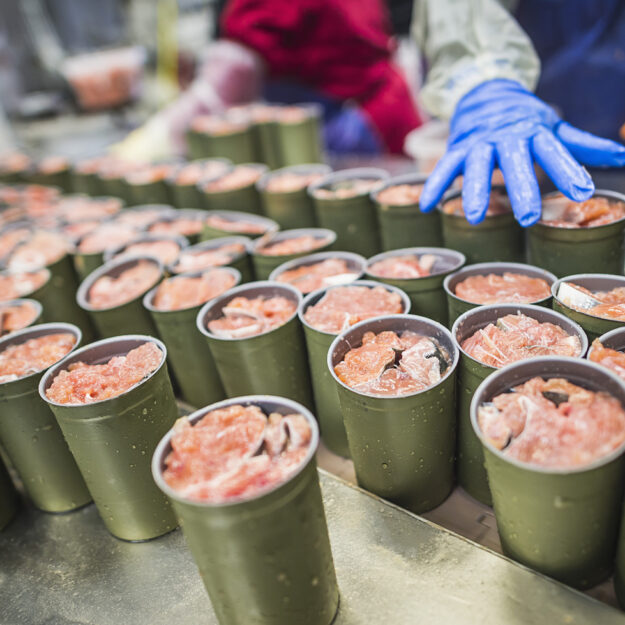
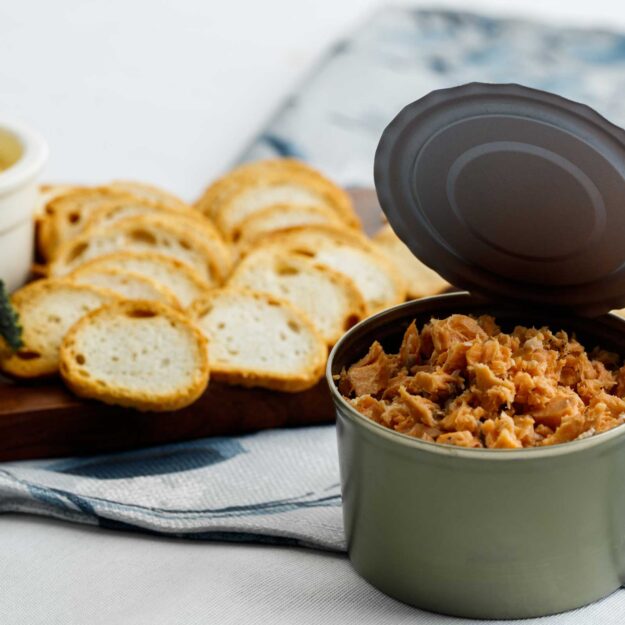
In the first decade after ASMI was founded to support market expansion for wild Alaska salmon, net-pen ocean salmon farming elsewhere took off. Soon thereafter, world markets were introduced to farmed Atlantic salmon — raised in waters all over the globe. The product was consistent and available as a refreshed product year-round. It could have been perceived as the enemy of a burgeoning fresh-frozen wild salmon industry.
Rather than put the two products in the same playing field by arguing the advantages offered by wild salmon, ASMI has always stood behind the mantra that the farmed product introduces new consumers all over the world to salmon. They are, in fact, opening the door for Alaska Seafood. Once familiar with the flavor profile, Alaska can take consumers to the next level of luxury with a taste of wild.
“Farmed salmon was just beginning to explode when I was hired as a contractor in 1996,” said Mark Jones, a longtime retail marketing representative for ASMI. “There were some growing pains as we strove to retain market share for wild Alaska salmon at retail. Industry and ASMI stepped up with aggressive campaigns to tout the benefits of wild Alaska salmon to both trade and consumers. Additionally, the industry stepped up their ability on freezing Alaska seafood at the peak of freshness, and was able to garner market share at retail in the fast-growing frozen seafood sections in supermarkets, mass merchants and club stores. ASMI supported this effort with the development of the Cook It Frozen campaign, and supported the campaign with targeted promotions at key regional and national retail partners.”
Today, salmon consumption is roughly three times higher than it was in 1980. Though farmed salmon accounts for about 70 percent of the consumption, wild salmon now firmly occupies the status of a luxury seafood. The supply of salmon has skyrocketed, but so has demand and appreciation.
The evolution of wild Alaska salmon from an inexpensive and convenient canned food to a prime cut in white-tablecloth restaurants is directly tied to the ASMI mission.
But as we all know, that’s just the beginning. ASMI works to elevate all species of wild Alaska seafood in markets all over the globe in innovative and exciting ways. For example, ASMI’s Seattle-based Alaska Herring Week and Wild Alaska Pollock Week are organized, city-wide celebrations of a single species highlighted on menus from Ballard to Pioneer Square. This close collaboration with the Alaska seafood industry has expanded the role of Alaska pollock from surimi to a white-tablecloth filet.
Great Depths for the Right Data
In order to increase the value of Alaska seafood, ASMI first educates consumers on the value proposition of the Alaska Seafood brand. Regular market research about purchasing behaviors at food service and retail provides all ASMI stakeholders with key insights to consumer preferences and trends.
ASMI staff is also committed to driving research to support quality improvements and product innovation to secure the next level of marketability.
The seafood technical program researches the components of seafood quality, provides educational materials and develops consumer-oriented specifications for the Alaska seafood industry to help harvesters and processors get the most out of their catch.
The domestic marketing program works to keep abreast of the shifting tides of American palates and purchasing habits, which has become an even more critical lifeline during the pandemic.
Relationships with chefs, social media influencers and members of the media help the ASMI staff identify and roll out the many arms of consumer outreach featuring ASMI fishermen ambassadors and partner chefs.
“ASMI has recently expanded its culinary relationships to include the new faces of culinary experts in the U.S. and global food scenes,” said Woodrow. “Lead publications like Food & Wine and Bon Appétit have seen revitalization recently, and ASMI has been right there to connect with the new generation of foodies and influencers.”
There can be no doubt that these relationships pay dividends. Since 2016, Alaska Seafood has held the top spot as the most commonly named protein brand on restaurant menus, surpassing Angus Beef for five years running.
The bottom line, data show, is that consumers now choose wild seafood because it tastes good, it’s nutritious, it’s sustainable, and it has a smaller carbon footprint than farmed animal proteins.
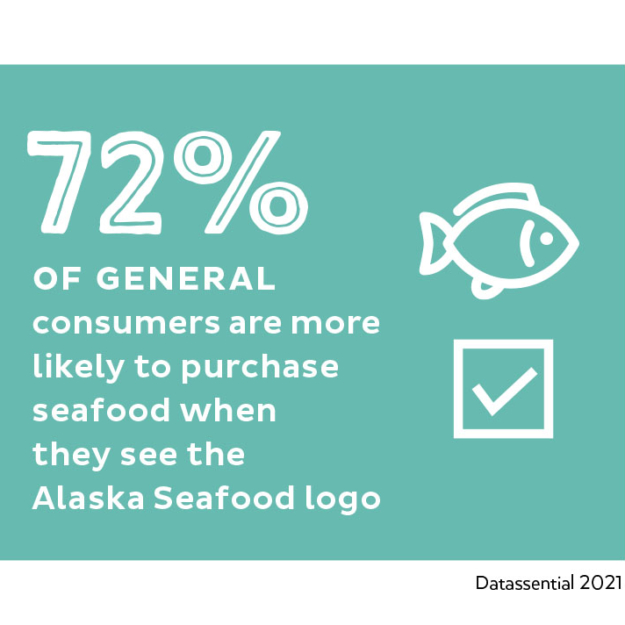
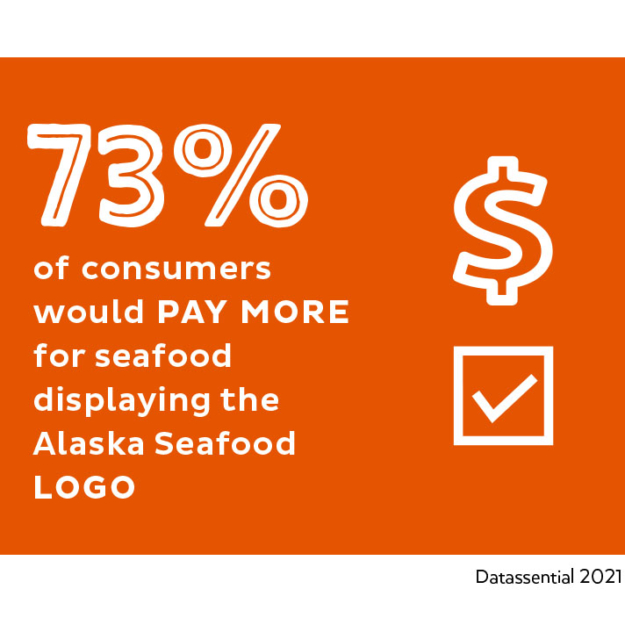
Today, ASMI supports seafood through every stage of the process from dock to dish.
But ASMI’s work doesn’t stop at research and specs. The agency commissions regular harvest bulletins, in-season salmon updates as well as an in-depth review of the economic impact of the state’s seafood industry.
The technical program seeks solutions to production and biological sticking points (like chalky halibut and ugly crab) as well as new opportunities for evolving product forms, improvements to quality and handling practices, and updated nutritional information.
The domestic marketing teams create the materials needed to deliver the Alaska message to customers at all points in the supply chain, from direct marketing to individual customers to food service and retail sales promotions.
The communications team keeps all ASMI stakeholders up to date on the latest offerings and accomplishments of the organization.
ASMI International develops new sales opportunities while maintaining reliable relationships in global markets.
“It’s important that ASMI can stay flexible — open to change and innovation,” said former Executive Director Alexa Tonkovich (2015-2018). “It’s a cliché, but the landscape is changing so fast. It’s hard work keeping abreast of market and marketing trends. I have no doubt the team at ASMI will remain leaders in that space.”
Beyond Alaska
When an Alaska fisherman walks onto the trade show floor at Seafood Expo North America in Boston for the first time, keep an eye on their face as they take in the scope of the global marketplace. In that moment, they get a glimpse of the world market, the scale of influence from powerhouse nations. The show illustrates the magnitude of international seafood markets. Each attendee leaves with a better understanding of how the ASMI team goes to battle every day in an effort to show how Alaska Seafood can stand out, possessing the qualities to rise above the fray.
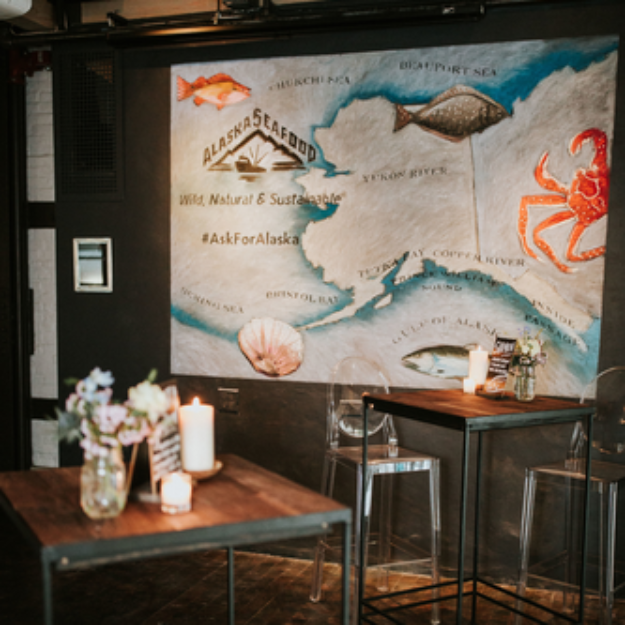
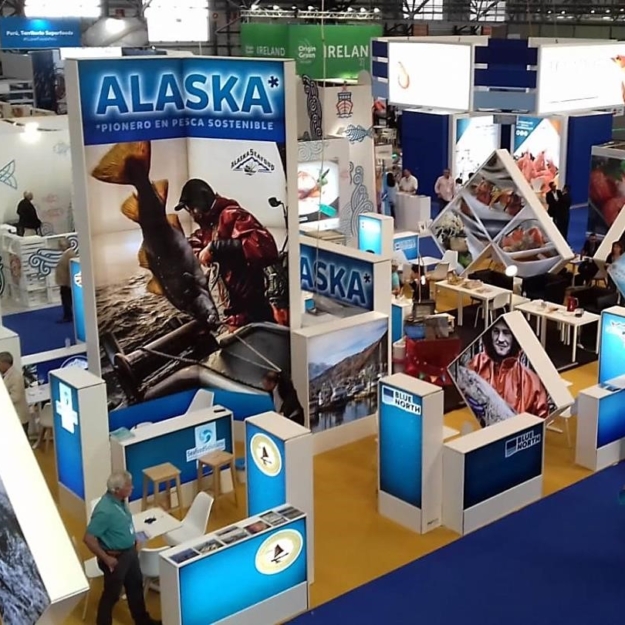
On a global stage, seafood markets abound with the product of both farmed and wild fisheries. Alaska’s prominence as a relatively small player competing with entire nations and multinational aquaculture corporations is even more remarkable. For example, Norway’s annual seafood export value is about $3.8 billion, and the nation is reportedly planning to spend upward of $40 million in global seafood marketing efforts alone for each of the next three years. Alaska seafood’s annual export value is just north of $3 billion, with a total international, domestic and operations budget of around $17.5 million. In short, the entire ASMI budget is less than half of what Norway will spend on global trade alone for a similar return.
“The global reach that ASMI has attained is impressive,” said Tonkovich. “Alaska is remote and not the biggest player in the game, so to have an impact in 30-plus countries takes great ingenuity.”
Fishery certification opened markets across Europe, and ASMI’s international team continues to develop tastes for Alaska Seafood across Asia as well.
“We had an international marketing program that was functioning well in Europe and Japan, primarily,” said Riutta of his arrival at ASMI in 2002. “We were just beginning to talk about China. Then came Eastern Europe and Russia, South America and Brazil.”
As these new markets opened, ASMI and its industry partners seized opportunities for new product forms and began selling directly to emerging markets, identified by teams on the ground in international offices.
“The Brazilian connection stemmed from the cod market,” Riutta said. “We used to send our cod to Spain. They’d repackage it and send it to Brazil. So we saw the opportunity to develop markets directly.”
Strong relationships between ASMI and the Alaska seafood industry, from harvester to processor, turned those opportunities into reality. Identifying new markets and being able to fulfill the needs of those markets are two big tasks that must work hand in hand.
“ASMI has done an incredible job expanding global opportunity right alongside the Alaska seafood industry,” said Woodrow. “Alaska’s presence in China has grown by orders of magnitude over the last 20-plus years. And more recently, we’re seeing new growth year over year from opportunities developing in South America.”
ASMI is essential for connecting the Alaska seafood industry with buyers worldwide.
“Over the last 20 years, ex-vessel value for all Alaska seafood species combined far exceeds the industry’s assessment to fund ASMI,” Woodrow said. “Ensuring a positive return to the industry means we are more than meeting our primary mission objective, which is to grow the value of Alaska’s seafood resources.”
About the Author
Jessica Hathaway
Jessica Hathaway is the editor in chief of National Fisherman, the publication of record for the U.S. commercial fishing industry, through which she has covered the industry for 17 years. She also serves on the Alaska Seafood Marketing Institute’s Communications Committee and is a board member of the National Fisheries Conservation Center.

